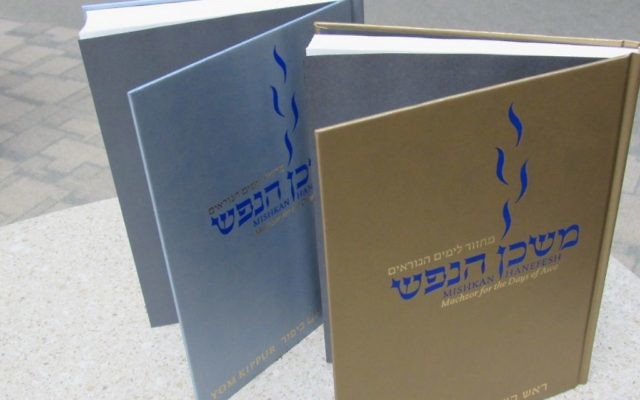New Reform Prayer Book Arrives for Holidays
By Logan C. Ritchie | lritchie@atljewishtimes.com
A new guest is appearing in pews across metro Atlanta synagogues: “Mishkan HaNefesh,” the Reform movement’s new mahzor (holiday prayer book), published in time for this year’s High Holidays.
Piloted in 2011 by the CCAR Press, “Mishkan HaNefesh” (“Sanctuary of the Soul”) is replacing the well-known “Gates of Repentance” mahzor, originally published in 1978. Unlike the one-volume “Gates of Repentance,” “Mishkan HaNefesh” comes in a two-volume set: gold for Rosh Hashanah and silver for Yom Kippur.
The new mahzor is more inclusive and progressive and allows rabbis to pick and choose prayers, concepts and commentaries that fit their congregations.
According to the Central Conference of American Rabbis, congregations that use the siddur (prayer book) “Mishkan T’filah,” which rolled out in 2007, want a mahzor that serves as a companion

in the same style. Today’s Jews, CCAR says, feel disconnected from prayer and from theological and ideological concepts that do not seem consistent with a contemporary sensibility. In response, “Mishkan HaNefesh” offers updated translations, essays, commentaries and poetry.
About half the local Reform synagogues are using “Mishkan HaNefesh” this year.
Temple Beth David in Snellville participated in the pilot program for “Mishkan HaNefesh” in 2013 and 2014 and is completing a three-year transition to the mahzor.
“I like it because it incorporates more tradition elements. There has been an improvement in language and content,” Rabbi Robert Kirzner said. “I tried to introduce variation to experience different aspects of ‘Mishkan HaNefesh’ to figure out what works for our congregation and what we like.”
The mahzor’s two-page-spread format reflects a traditional path on the right page and a creative approach on the left. Traditional texts and translations appear on white pages, alternative approaches are on gray pages, and study and reflection pages are in blue.
Rabbis thus can choose a combination of prayers and other materials to suit their congregations. The format also offers freedom to change the service from one year to the next.
To cover the cost of about $45 per set, Beth David members were asked to purchase their own prayer books. “Given our size, to invest in the number of books required is beyond our ability,” Rabbi Kirzner said.
Temple Sinai in Sandy Springs has introduced “Mishkan HaNefesh” with an adult education miniseries. Communications Director Kathy Powell said the three-part series addresses the layout and flow of the mahzor.

A donation from the children of George and Eva Stern, founding members of Temple Sinai, covered the cost of 1,700 mahzor sets. George Stern was also a longtime board member and was involved with the ritual committee.
Sinai Senior Rabbi Ron Segal serves as vice president of the CCAR board of trustees and was instrumental in developing the mahzor.
Senior Rabbi Peter Berg of The Temple in Midtown served on the editorial board for “Mishkan HaNefesh.” He said it was a seven-year project near to his heart.
“It’s a beautiful, inspiring, meaningful prayer book. It has an integrated theology, and there is something for you regardless of where you are on the theological spectrum. Like choose your own adventure, you can find new and exciting things every time you open it up,” Rabbi Berg said. “The prayer book also has neat innovations; instead of sounding shofar in one place, we spread it out over three different places in the service.”
Photos courtesy Temple Sinai
—–
5 Things to Know About ‘Mishkan HaNefesh’
- A digital version is expected to roll out in 2016.
- More than 300 congregation and chavurot tested the mahzor from 2011 to 2014. Their feedback was crucial to the 2015 version.
- Feminist and LGBTQ-friendly terms are included in prayers. For example, instead of “bride and groom,” “Mishkan HaNefesh” uses “the couple.”
- Original artwork by Joel Shapiro is found throughout. His woodcuts are abstract, primal and up for interpretation.
- Individuals are encouraged to explore and interpret freely before, during and after the holiday.




comments